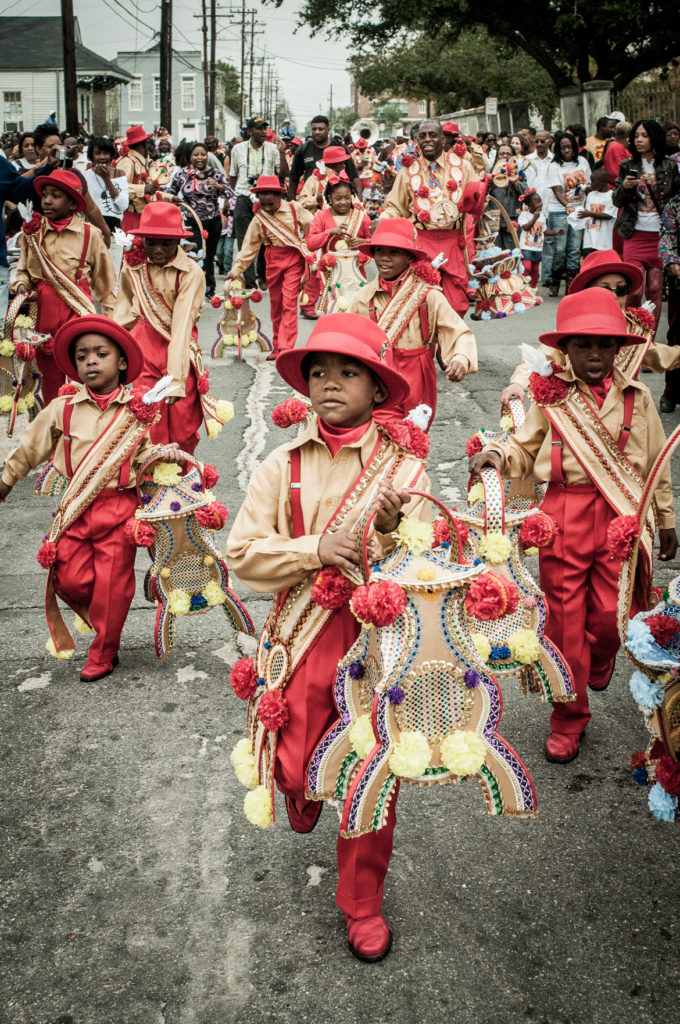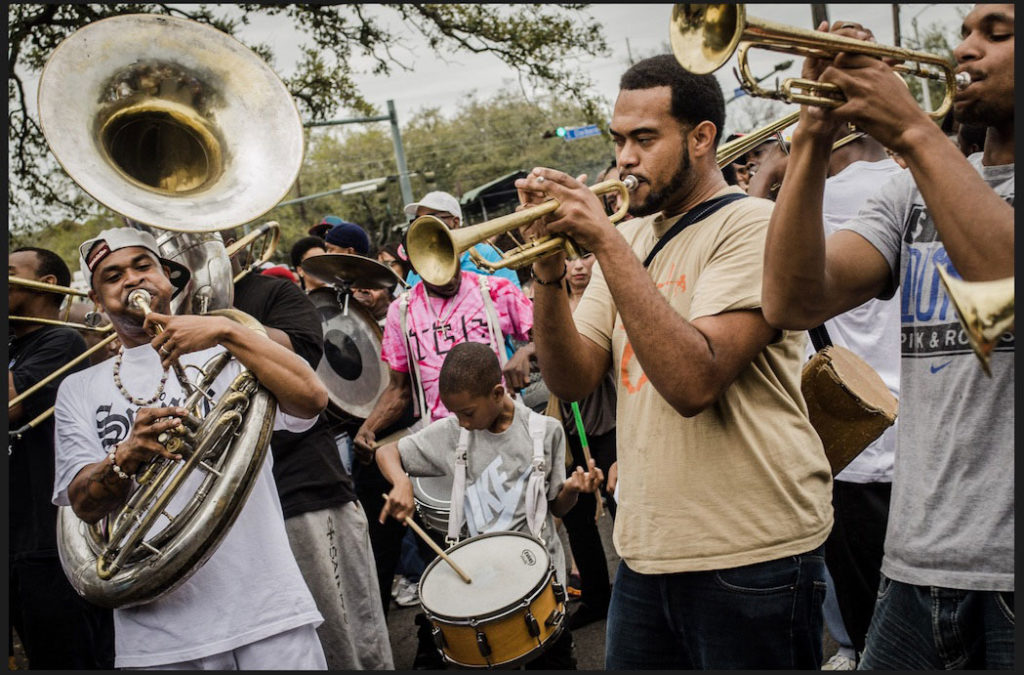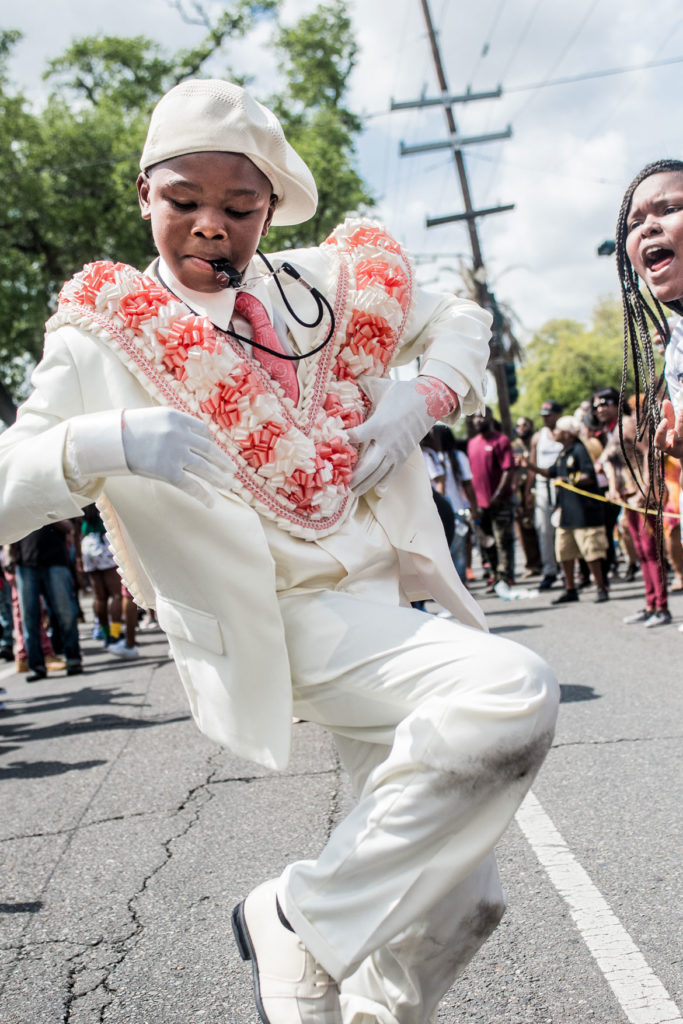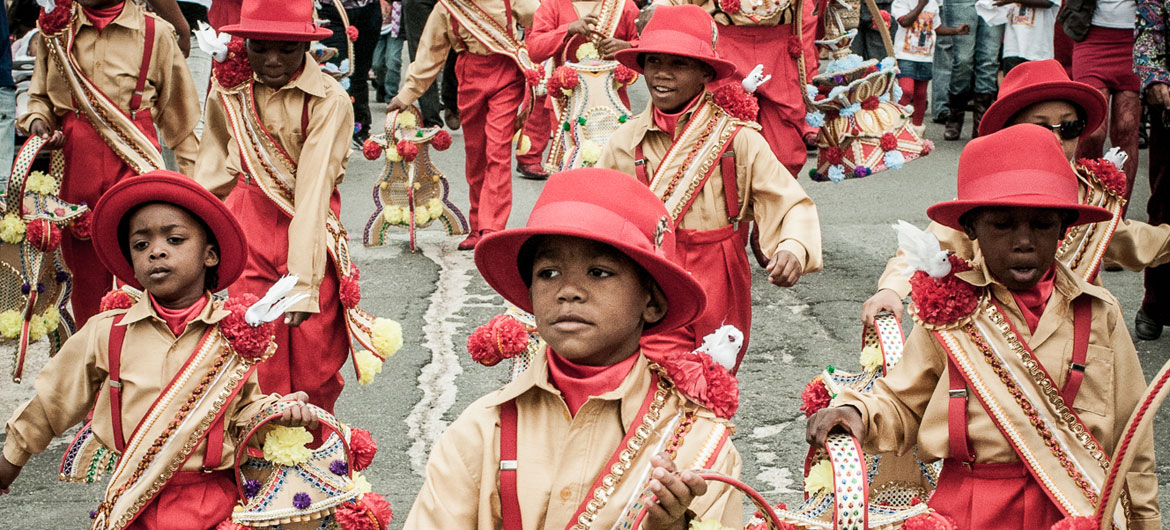“My goal with these photographs is to capture in a single frame what it feels like to be in the middle of a Second Line,” Pableaux Johnson has said, “sandwiched between the horn line and a parked car, riding the rope that defines the club’s sacred dance floor, sneaking in to catch the frenetic buckjumping style that matches New Orleans contemporary brass band music.”
Johnson, also a food and travel writer, has been diligently documenting second line parades for the past decade, but first began photographing them when he arrived in New Orleans in 2001. The images are featured in “New Orleans Second Line Parades: Photographs by Pableaux Johnson” at UCLA’s Fowler Museum in Los Angeles from December 16, 2018, to April 28, 2019.

Second Line parades are a hallmark of New Orleans. They are generally thought to have originated from Social Aid and Pleasure Clubs that sprang up in New Orleans’ African American community mid-19th century to provide insurance, funeral services and other mutual-aid when white-run businesses refused to sell black folks insurance and other services. Now the clubs are best known for organizing brass band parades that wind through the city some 40 Sundays each year.
The parades are led by a “first line” made up of a marching band and club members splendidly attired in custom suits and gowns and dancing along carrying parasols, sashes, and feathered fans. The “second line” is the crowd of friends and fans who follow along.
“In a city that’s 300 years old,” Johnson has said, “Sunday Second Lines nod to the past but embrace the present—that thin line where tradition lives fully, four hours of unbridled jubilation at a time.”
Previously: “Second Line Parades and Mardi Gras Floats in New Orleans”
If this is the kind of coverage of arts, cultures and activisms you appreciate, please support Wonderland by contributing to Wonderland on Patreon. And sign up for our free, weekly newsletter so that you don’t miss any of our reporting.




